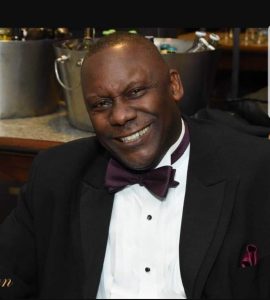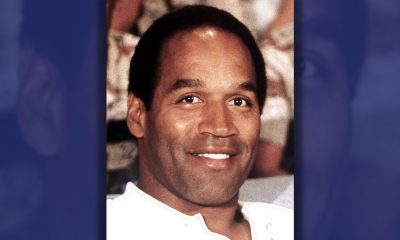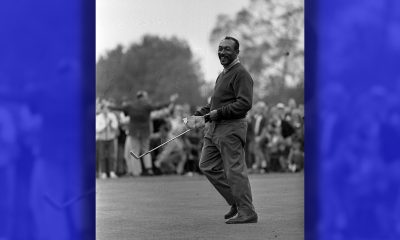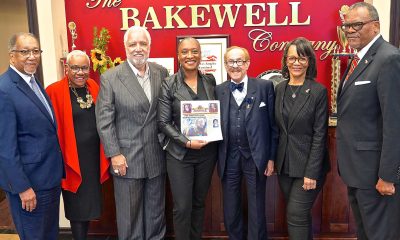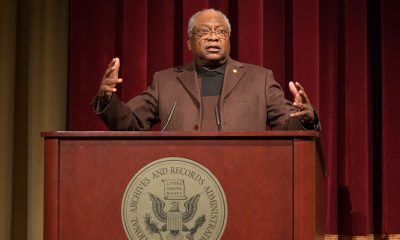Black History
Know Your History, Know Yourself
MILWAUKEE COURIER — Black History Month is about many things, but above all it is about honoring and recognizing those who came before us.
By Alderman Ashanti Hamilton, Common Council President City of Milwaukee
Black History Month is about many things, but above all it is about honoring and recognizing those who came before us: our ancestors. It is about looking at our ancestors, our elders and the generations to come who will radically change the world. We read biographies, listen to speeches, look at photos and do a host of other activities to briefly acknowledge the impact that Blacks of African descent have had on the world. During these times, it reminds me of one of my personal heroes who set the standard for how we engage with the important practice of acknowledging Black History, Dr. Carter G. Woodson.
Dr. Woodson was the first person to proclaim the importance of tracking and analyzing the contributions of Black people throughout history. After graduating from Berea College, University of Chicago and Harvard University, Dr. Woodson established the Association for the Study of Negro Life and History. The expressed purpose of this organization was to legitimize Black history as a field of study and recognize Black Americans and their history as an integral part of the country’s story. In reality, Dr. Woodson was the father of Black History itself, in addition to the concept of Black History Month.
Knowing who you are and where you come from is a foundational piece of having value in yourself and your community. What are the historical contributions of people that look like you? What historical events can you take pride in? What can you be proud of as a member of the Black community? Dr. Woodson wanted to institutionalize the answers to these questions. He wanted everyone to be educated in a way that made this history a known and understood part of the historical fabric of the nation–not just a unit taught in a history class or a few reading assignments during February. The goal was always to have the broader community learn the realities of our history, not just the people who knew it through experience.
This is so important when we talk today about changing the narrative in Milwaukee. If people understand our history and are taught the ways that our systems and mainstream discussions mischaracterize and omit the contributions of Black people throughout history, then they are less likely to internalize this false narrative. Our community is so much more than being enslaved and fighting for civil rights, yet that is too often the simplistic perception of our history. To change the narrative of our community, we must educate the masses about the greatness of our history, proclaim the greatness of our history and live up to the greatness of our history. This begins with the practice of documenting and studying the history of Black Americans that Dr. Woodson pioneered.
Another remarkable thing about Dr. Woodson was that he radically changed life for Black Americans in such a unique and sometimes forgotten way. His purpose and life’s mission was educating people. He was imparting knowledge on them that they would not get from anyone else. And he was doing this in the 1920s, only a few decades after the legal emancipation of slaves. To honor his legacy, we must be intentional about educating people in the same way.
One of the reasons that I became an educator was that I had teachers and mentors in my life that were intentional about sharing this history with me. I had people who would not let me accept and internalize mainstream perceptions of me and my ancestors. Gaining that knowledge transformed the value I placed on my own life and the lives of those around me. I felt then and still feel obligated to pay that forward and educate future generations to understand their history in a more powerful context.
As I think about the number of books, essays and other writings that Dr. Woodson published, I immediately think of a passage from his seminal work, The Miseducation of the Negro:
Philosophers have long conceded, however, that every man has two educators: that which is given to him and that which he gives himself. Of the two kinds, the latter is by far the more desirable. Indeed, all that is most worthy in a man he must work out and conquer for himself. It is that which constitutes our real and best nourishment. What we are merely taught seldom nourishes the mind like that we teach ourselves.
This passage is a transformational piece for any member of our community to read and is just a drop in the ocean of publications and works that have are available to bring our history to life. We can read books like the Souls of Black Folk, I am Not Your Negro and The Autobiography of Malcolm X. We can go to the Wisconsin Black Historical Society Museum, America’s Black Holocaust Museum and the National African American History and Cultural Museum. We can talk to our elders and gain knowledge through the rich oral history that they can share. These are opportunities to learn some of these would not have existed without Dr. Woodson and we owe it to his legacy to take advantage.
My call to us today is to use this month as an opportunity to engage with our history in an intentional way now and every day for the rest of our lives. More importantly, we need to teach our children this history from a young age and never allow them to doubt their value and greatness. As a community, we have so much to take pride in. Let’s learn about this history – because in doing so we learn about ourselves.
This article originally appeared in the Milwaukee Courier.
Black History
Matthew Henson: Explorer Extraordinaire
Matthew Henson, a trailblazing explorer who overcame countless obstacles to leave an incredible mark on history. Born on August 8, 1866, in Charles County, Maryland, his journey is a testament to the power of determination and the spirit of adventure.

By Tamara Shiloh
Matthew Henson, a trailblazing explorer who overcame countless obstacles to leave an incredible mark on history. Born on August 8, 1866, in Charles County, Maryland, his journey is a testament to the power of determination and the spirit of adventure.
Henson’s life began amidst the backdrop of post-Civil War America, where opportunities for African Americans were scarce. From a young age, he possessed an insatiable curiosity about the world beyond his small town. At the age of 12, he embarked on a journey that would change the course of his life forever when he joined a merchant ship as a cabin boy.
His most famous expedition was his journey to the Arctic with renowned explorer Robert E. Peary. In 1887, Henson joined Peary’s crew as a seaman and quickly proved himself to be invaluable with his skills as a navigator and craftsman. Over the course of several expeditions, Matthew endured extreme cold, treacherous terrain, and grueling conditions as he and Peary sought to reach the elusive North Pole.
In 1908–09, Peary set out on his eighth attempt to reach the North Pole. It was a big expedition, with Peary planning to leave supplies along the way. When he and Henson boarded their ship, the Roosevelt, leaving Greenland on August 18, 1909, they were joined by a large group. This included 22 Inuit men, 17 Inuit women, 10 children, 246 dogs, 70 tons of whale meat, blubber from 50 walruses, hunting gear, and tons of coal.
In February, Henson and Peary left their anchored ship at Ellesmere Island’s Cape Sheridan, along with the Inuit men and 130 dogs. They worked together to set up a trail and supplies along the way to the Pole.
Peary picked Henson and four Inuit people to join him in the final push to the Pole. However, before they reached their destination, Peary couldn’t walk anymore and had to ride in a dog sled. He sent Henson ahead to scout the way. In a later interview with a newspaper, Henson recalled being in the lead and realizing they had gone too far. The group turned back, and Henson noticed his footprints helped guide them to their destination. At that location, Henson planted the American flag.
Henson’s legacy extends far beyond his expeditions to the Arctic. He shattered racial barriers in the world of exploration and inspired countless individuals, regardless of race, to dream big and pursue their passions. In 1937, he was finally recognized for his achievements when he was inducted into The Explorers Club, an organization dedicated to promoting scientific exploration and field research.
Matthew Henson died in the Bronx, New York, on March 9, 1955, at the age of 88.
Art
Marin County: A Snapshot of California’s Black History Is on Display
The Marin County Office of Education, located at 1111 Las Gallinas Ave in San Rafael, will host the extraordinary exhibit, “The Legacy of Marin City: A California Black History Story (1942-1960),” from Feb. 1 to May 31, 2024. The interactive, historical, and immersive exhibit featuring memorabilia from Black shipyard workers who migrated from the South to the West Coast to work at the Marinship shipyard will provide an enriching experience for students and school staff. Community organizations will also be invited to tour the exhibit.

By Post Staff
The Marin County Office of Education, located at 1111 Las Gallinas Ave in San Rafael, will host the extraordinary exhibit, “The Legacy of Marin City: A California Black History Story (1942-1960),” from Feb. 1 to May 31, 2024.
The interactive, historical, and immersive exhibit featuring memorabilia from Black shipyard workers who migrated from the South to the West Coast to work at the Marinship shipyard will provide an enriching experience for students and school staff. Community organizations will also be invited to tour the exhibit.
All will have the opportunity to visit and be guided by its curator Felecia Gaston.
The exhibit will include photographs, articles and artifacts about the Black experience in Marin City from 1942 to 1960 from the Felecia Gaston Collection, the Anne T. Kent California Room Collection, The Ruth Marion and Pirkle Jones Collection, The Bancroft Library, and the Daniel Ruark Collection.
It also features contemporary original artwork by Chuck D of the Rock and Roll Hall of Fame group Public Enemy, clay sculptures by San Francisco-based artist Kaytea Petro, and art pieces made by Marin City youth in collaboration with Lynn Sondag, Associate Professor of Art at Dominican University of California.
The exhibit explores how Marin City residents endured housing inequities over the years and captures the history of plans to remove Black residents from the area after World War II. Throughout, it embodies the spirit of survival and endurance that emboldened the people who made Marin City home.
Felecia Gaston is the author of the commemorative book, ‘A Brand New Start…This is Home: The Story of World War II Marinship and the Legacy of Marin City.’ Thanks to the generous contribution of benefactors, a set of Felecia’s book will be placed in every public elementary, middle, and high school library in Marin.
In addition, educators and librarians at each school will have the opportunity to engage with Felecia in a review of best practices for utilizing the valuable primary sources within the book.
“Our goal is to provide students with the opportunity to learn from these significant and historical contributions to Marin County, California, and the United States,” said John Carroll, Marin County Superintendent of Schools.
“By engaging with Felecia’s book and then visiting the exhibit, students will be able to further connect their knowledge and gain a deeper understanding of this significant historical period,” Carroll continued.
Felecia Gaston adds, “The Marin County Office of Education’s decision to bring the Marin City Historical Traveling Exhibit and publication, ‘A Brand New Start…This is Home’ to young students is intentional and plays a substantial role in the educational world. It is imperative that our community knows the contributions of Marin City Black residents to Marin County. Our youth are best placed to lead this transformation.”
The Marin County Office of Education will host an Open House Reception of the exhibit’s debut on Feb. 1 from 4 p.m. – 6 p.m.. All school staff, educators, librarians, and community members are encouraged to attend to preview the exhibit and connect with Felecia Gaston. To contact Gaston, email MarinCityLegacy@marinschools.org
Activism
Oakland Post: Week of April 10 – 16, 2024
The printed Weekly Edition of the Oakland Post: Week of April 10 – 16, 2024
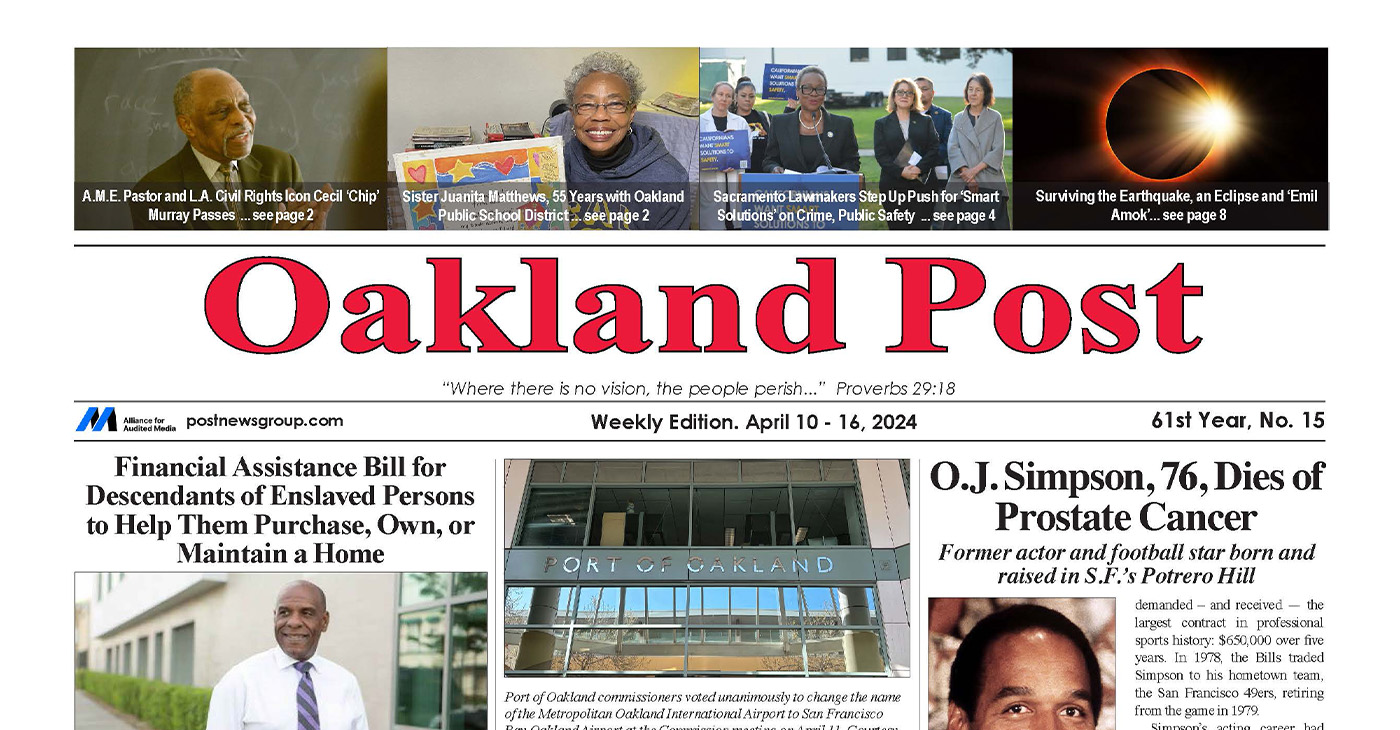
To enlarge your view of this issue, use the slider, magnifying glass icon or full page icon in the lower right corner of the browser window. ![]()
-

 Activism4 weeks ago
Activism4 weeks agoOakland Post: Week of March 20 – 26, 2024
-

 #NNPA BlackPress3 weeks ago
#NNPA BlackPress3 weeks agoCOMMENTARY: D.C. Crime Bill Fails to Address Root Causes of Violence and Incarceration
-

 #NNPA BlackPress3 weeks ago
#NNPA BlackPress3 weeks agoMayor, City Council President React to May 31 Closing of Birmingham-Southern College
-

 #NNPA BlackPress3 weeks ago
#NNPA BlackPress3 weeks agoCOMMENTARY: Lady Day and The Lights!
-

 #NNPA BlackPress3 weeks ago
#NNPA BlackPress3 weeks agoFrom Raids to Revelations: The Dark Turn in Sean ‘Diddy’ Combs’ Saga
-

 #NNPA BlackPress3 weeks ago
#NNPA BlackPress3 weeks agoBaltimore Key Bridge Catastrophe: A City’s Heartbreak and a Nation’s Alarm
-

 #NNPA BlackPress3 weeks ago
#NNPA BlackPress3 weeks agoBaltimore’s Key Bridge Struck by Ship, Collapses into Water
-

 Activism3 weeks ago
Activism3 weeks agoOakland Post: Week of March 27 – April 2, 2024

